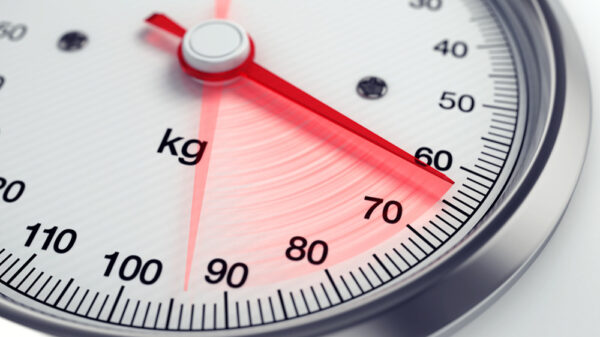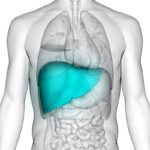If you’re over 50, you’ve probably noticed that shedding extra pounds seems to be significantly more difficult than it was in your 20’s and 30’s. What gives? Why does it seem impossible to lose weight later in life? Here we go through why age is a factor influencing weight loss and tips for losing weight after 50 years of age.
The Impact of Age on Metabolism
As we age, biological changes occur that impact how the body processes energy. The body is comprised of trillions of cells, each of which contains a piece of biological machinery called the mitochondria. Often called the “powerhouse of the cell” in school textbooks and biology classes, the mitochondria are responsible for producing adenosine triphosphate (ATP) by converting the nutrients we eat into useable forms of energy.
Young cells and mitochondria operate most efficiently and can carry out metabolic processes without a hitch. On the other hand, worn out by the wear and tear of daily use over many decades, older cells and mitochondria tend to operate more slowly.
Much like old machinery, cells that have been around for longer become increasingly susceptible to dysfunction not only in mitochondrial processes but also other mechanisms like DNA replication, DNA packaging, cellular waste management, and protein synthesis that cause cellular damage.
Because of these changes that occur over time, not surprisingly, middle-aged and older adults are at a greater risk of being overweight and developing metabolic conditions like insulin resistance, high cholesterol, high blood pressure, type 2 diabetes, and fatty liver disease. This is why losing weight after 50 is harder than losing weight after 40, which is harder than losing weight after 30.
Luckily, environmental factors including diet, lifestyle, and exercise can influence cellular metabolic functioning for the better. Below are ways you can improve mitochondrial function, improve metabolism, and facilitate weight loss.
1. Eat an Anti-Inflammatory Diet High in Polyphenols
Components in food have the ability to improve your metabolism by fighting against oxidative stress and inflammation.
The Right Diet Protects Against Inflammation and Oxidative Stress
All cells generate waste products, and as we age, our cells become less efficient at clearing waste. This waste particles, particularly reactive free radicals, can hinder normal metabolic functioning in a state called oxidative stress.
Inflammation occurs when the immune system is in a chronic state of activation. Under normal circumstances, the immune system becomes active in response to physical injury, invading pathogens, or allergens. When the trigger is removed, the immune system returns to its default state. However, when the immune system is chronically activated in the absence of a normal trigger, this signifies an imbalance in the body and can cause disruptions in normal metabolic and organ functioning.
Combined with the natural aging process, oxidative stress and inflammation can really wreak havoc on your metabolism and contribute to weight gain. Antioxidants found in plant foods are able to neutralize and disarm free radicals, protecting against damage. By eating an anti-inflammatory diet rich in antioxidants, your mitochondria will operate more smoothly, and your cells will be able to help fight against age-related damage more readily, which will facilitate weight loss. You will even feel the difference in your energy levels.
The Plant-Based Mediterranean Diet
A plant-based Mediterranean diet has powerful anti-inflammatory effects on the body. The Mediterranean diet has been shown to increase insulin sensitivity while also improving fatty liver disease. When following a plant-based Mediterranean diet, aim to get most of your calories from veggies, fruits, whole grains, nuts, and seeds. Get moderate amounts of fatty fish in your diet for loads of healthy fats in the form of omega-3 fatty acids. Limit the amount of dairy, meat, added sugar, and refined grains that you eat. When you do eat dairy and meat, aim for lean protein-rich products like nonfat Greek yogurt and chicken breast.
By eating mainly plant-based foods, you will support healthy immune system functioning, gut microbiome, and mitochondrial function. Plus, the abundance of plant foods like fruits, veggies, whole grains, and legumes affords lots of antioxidants.
Antioxidants directly fight against oxidative stress in the body by deactivating free radicals that inflict damage in the cells, allowing your cells to then clear them. Antioxidants are generally classified as polyphenols or carotenoids and can be found in foods like kale, spinach, broccoli, collard greens, cherries, blueberries, strawberries, blackberries, oranges, sweet potatoes, carrots, and papaya.
When your mitochondria and cells function more effectively, they can better process the food you’re eating into useable energy and avoid accumulating excess weight.
2. Monitor Your Calorie Intake
In order to keep weight gain at bay, energy intake must be balanced with energy expenditure. Burning more calories than you eat will lead to weight loss while consuming more calories than you burn will lead to weight gain.
Additionally, research shows that when we take in calories in surplus, the mitochondria aren’t able to function as effectively. (1) When mitochondria are overloaded with they are unable to function properly to convert macronutrient particles – carbohydrates, protein, and fat – into energy.
Avoid depriving the body of certain macronutrient groups and instead get a balance of carbs, protein, and fat to ensure the metabolism than carry on undisrupted.
Make sure to eat sufficient calories to fuel your daily activities, but not so much that it accumulates in fat deposits throughout the body.
At the same time, avoid severe caloric restriction, which can force the body into starvation mode. When the body thinks it won’t be getting enough fuel, it will begin to hold onto excess fat and slow the weight loss process. Severely restricting your calorie intake will also deprive the body of essential amino acids, causing the body to turn to its own muscle as a protein source. Without adequate muscle tissue, your resting metabolic rate slows down significantly.
3. Exercise and Strength Training
Getting adequate exercise is particularly important for people over 50 trying to lose weight.
Importance of Lean Muscle Mass
After the age of 30, each decade is marked by a significant decline in muscle mass percentage, due to natural aging. After age 50, muscle loss due to aging – also called sarcopenia – can ultimately lead to an increased risk of injury, delayed healing time, slow metabolism, weight gain, metabolic dysfunction, and a lower quality of life.
Having more lean body mass is important for boosting your resting metabolic rate and improving your body composition, especially when you’re over the age of 50. Muscle cells use up glucose at a rapid rate, helping your body clear glucose from the bloodstream and put it to good use. The mitochondria in the muscle cells are hard at work to fuel muscle tissue to keep it repairing quickly and allowing it to remain healthy without wasting away.
In order to expedite weight loss over the age of 50, you must make a concerted effort to maintain muscle mass by exercising consistently and eating the right foods. Strength training boosts muscle growth. During a strength training session, exercises challenge the muscles and induce small tears on a molecular level. In the few days following a strength training session, muscle tissue must repair itself, and in the process, develops more strength in preparation for the next session.
Strength Training
Strength training or resistance training is critical to fostering muscle growth. When people think of strength training, they often think of massive bodybuilders pressing giant weights. However, strength training can involve any range of weights, including bodyweight exercises. Pushups, pullups, and squats are examples of effective bodyweight exercises. If you’re new to strength training, start out with bodyweight or lightweight exercises and work your way up from there.
Ideally, you should incorporate strength training into your routine at least three times per week.
Looking for an extra-strength training challenge? Try metabolic resistance training, which is a high-intensity form of strength training intended to speed your metabolic rate while facilitating muscle growth.
Aerobic Exercise
Though strength training is critical for weight loss for adults over the age of 50, aerobic exercise is an excellent form of exercise as well. Aerobic exercise refers to cardio exertion and challenges the cardiovascular system instead of the muscles. Engaging in regular aerobic exercise helps the body burn excess calories while also strengthening the vasculature and the heart muscle. Increasing your aerobic endurance, though it won’t necessarily increase your resting metabolic rate, will lead to more weight loss and improvements in markers of metabolic health. For example, regular cardio has been shown to help improve high cholesterol levels, manage blood sugar levels, increase insulin sensitivity, and improve high blood pressure. As is the case with strength training, metabolic aerobic training involves high-intensity exercises that boost the metabolism as much as possible.
4. Get Optimal Ratios of Essential Amino Acids
The key isn’t to just eat a higher amount of protein, but to eat higher quality protein. High-quality protein contains all essential amino acids in optimal ratios. There are nine essential amino acids that we rely on to carry out all biological functions: histidine, threonine, methionine, lysine, leucine, isoleucine, valine, phenylalanine, and tryptophan.
Why Do We Need Essential Amino Acids?
Getting all of nine essential amino acids in optimal ratios is critical for manufacturing neurotransmitters, carrying out metabolic processes, and building muscle tissue. Without all nine essential amino acids, these processes are stunted. Essential amino acids are especially important for facilitating repair after strength training sessions and allowing the body to produce sufficient amounts of muscle. Plus, protein in the muscle turns over each day and must be refreshed with new essential amino acids.
Dietary Sources of Essential Amino Acids
The foods that contain optimal ratios of essential amino acids are primarily animal products. However, these foods can also induce inflammatory effects in the gut and throughout the body. When following a plant-based diet, soybeans and other soy products like tofu and tempeh are the most complete sources of essential amino acids. Other plant foods containing essential amino acids include whole grains, nuts, seeds, and beans. However, the main caveat with relying on plant-based proteins for essential amino acids is that nearly all plant proteins contain at least one limiting amino acid. This means that one of the nine essential amino acids is missing from the food source. If your body is deprived of essential amino acid, muscles don’t have all the raw materials they need to grow and repair, and muscle wasting may continue.
To keep inflammation low after 50 and expedite weight loss, stick to a plant-based Mediterranean diet, and get your essential amino acids through combining a variety of plant products over the course of your day. Even better, add a high-quality essential amino acid supplement to your daily regimen to take the guesswork out of planning your essential amino acid intake while on a plant-based diet.
5. Sleep Enough
While you’re asleep, your cells are working hard to repair from the day’s activities. Getting enough sleep is critical for reducing oxidative stress and inflammation while fighting age-related damage. Getting adequate sleep is also important to prevent the negative effects of stress that exacerbate weight gain.
The amount of sleep you need for optimal functioning varies by age with infants, children, and adolescents requiring the most rest. If you’re over 50, aim to get 7-8 hours of sleep each night.
6. Establish Regular Sleeping Patterns
Beyond simply sleeping enough hours, it is also important to make sure that you sleep on a regular schedule, if possible. Your sleep patterns have been shown to impact your health and impeded weight loss goals.
A study conducted by researchers at the Department of Public Health and Clinical Medicine at the University of Umea in Sweden examined the metabolic health indicators across a sample of 27,485 shift workers and day workers. (2) Results found that shift workers were at a significantly higher risk of obesity and high serum triglycerides, in comparison to day workers. (2)
While day workers perform their duties during a traditional 9-5 workday, shift workers must cover nights and early mornings, meaning their natural circadian rhythm is constantly disturbed. Disrupting the body’s natural rhythm of sleep can lead to less effective mitochondrial function, a poor stress response, and a tendency to hold onto excess fat and belly fat.
To keep your circadian rhythm on track, keep your sleeping schedule steady and aim to go to bed and wake up at roughly the same time each day. Melatonin is a helpful over-the-counter supplement that can help your body produce signals that it’s time for sleep. Try establishing a bedtime routine and a morning routine, to help your body recognize external cues that signal when it’s time for rest and when it’s time to wake up. For example, each night you could listen to soothing music, drink a hot cup of chamomile tea, and read a book before sleep. Each morning, you could go on a walk and drink a cup of coffee.
7. Manage Stress Levels
We all experience stress at some points in our lives. However, after age 50, the body becomes less resilient to the physiological effects of stress.
When the body reacts to stress, it enters what we call “fight-or-flight” mode. The body perceives a stressor as a threat to physical wellbeing, and releases chemicals like cortisol, epinephrine, and norepinephrine to help you focus and make hasty decisions that benefit survival. Though this response was initially an adaptive behavior in the face of threats, the stress response hasn’t evolved to effectively handle the stressors of a highly industrialized world. Common triggers of chronic stress for adults over 50 include work, relationship worries, and financial stress. Stress is particularly damaging when experienced constantly. The impact of chronic stress on biochemistry can lead to easier weight gain in older adulthood.
A study conducted by researchers at the School of Behavioral and Brain Sciences at the University of Texas in Dallas found that higher levels of stress were associated with poorer measures of physical health. (3) The study established the potential for mindfulness as a crucial technique for adults between the ages of 50-85 to manage their stress to improve their health. (3)
In particular, chronically high levels of cortisol can upset the delicate balance of hormones and biological compounds in the body, including hormones critical for regulating appetite like leptin and ghrelin. This can, in turn, lead to increased appetite and high blood sugar. This can exacerbate the development of type 2 diabetes, fatty liver disease, and cardiovascular disease.
Numerous techniques can equip you to battle stress over 50 and streamline the weight loss process:
- Mindfulness: Practicing mindfulness means that you remained centered on the present moment and exercise a pattern of nonjudgmental thinking. (3)
- Meditation: Meditation is a useful technique for practicing mindfulness. To practice meditation, try setting aside a few minutes each day to sit quietly away from disturbances and distractions to just “be.” We currently live in a world where our phones, tablets, and laptops provide constant distraction and access to facts, opinions, and disturbing news, all of which can heighten the stress response. During a period of meditation, aim to focus on your inhales and exhales to draw attention from worrying to your existence.
- Exercise: As well as being directly helpful for weight loss, exercise can also boost your mood and fight against stress.
- Quality time with people you love: In a world dictated by technology, we are now getting less face-to-face time than previous generations. When we are spending time with our loved ones, many times we have our phones out instead of talking to one other. Human connection and positive social interactions are critical for increasing our mood and improving our stress response. Fostering solid relationships is also critical for creating a support network that takes the pressure off of you when you’re in a time of significant stress.
- Connecting with nature: Taking a walk outside can be a centering experience and can help you engage in mindfulness techniques. As you walk, think about the sounds and sights around you. Maybe you hear a chirping bird, the shaking of leaves in the wind, or water trickling over stones in a creek.
8. Fasting
Fasting may be a helpful technique for supporting weight loss for individuals over the age of 50. It’s important to note that fasting is very different than starvation. While a very low-calorie diet would deprive your body of the nutrients and energy it needs, fasting requires limited periods of low or no caloric intake. This period of time may range from 12 hours of fasting to 24 hours of low-calorie intake. However, the period of fasting is always sandwiched by sufficient macronutrient and micronutrient consumption, preventing deprivation. Research suggests that intermittent fasting techniques may help counteract aging, increase metabolism, and preserve muscle.
Researchers at the University of Florida conducted a pilot study on 10 overweight, older adults to examine the impacts of intermittent fasting. (4) Results showed that adults engaging in intermittent fasting lost weight and scored higher on tests evaluating the quality of life. (4)
Start out gradually if you’re incorporating fasting into your routine. For example, first, try a 12-hour overnight fast before bumping it up to a 16-hour or 18-hour fast. If you want to sprinkle a couple of very-low-calorie days throughout the week, start out with one very low-calorie day. If during an intermittent fast or a very low-calorie day you begin to feel lightheaded, dizzy, or shaky, this is likely an indicator that your blood sugar is dipping below the normal range. To fix the symptoms, eat a light snack or drink a little bit of juice. You don’t want your blood sugar levels to dip uncomfortably below the normal range.
9. Medications
Some medications have unpleasant side effects that increase the likelihood of accumulating fat in certain areas of the body or retaining water. If you suspect that your medication is contributing to weight gain, speak with your doctor. If the side effects are undesirable and are reasons for stubborn weight gain, your doctor may have ideas for alternative treatments that lower the likelihood of unwanted side effects.
Things to Keep in Mind
Your propensity for weight gain or metabolic conditions is also influenced by other factors that may vary across individuals, including DNA and hormonal fluctuations. In particular, for women entering menopause, hormonal fluctuations also play a role in slowing down the metabolism.
Before starting a regimen that incorporates new supplements or big lifestyle changes, double-check with your doctor to make sure that your plan supports your health needs. A registered dietitian and a personal trainer and support you in devising a plan that’s tailored to your nutrient needs and physical activity goals.
Conclusion
Without a doubt, losing weight after age 50 is a much bigger challenge than at age 30. As the body’s cells age, the metabolism naturally becomes more sluggish. Luckily, a number of environmental changes can combat age-related metabolic issues. By committing to strength training, eating an anti-inflammatory diet, and getting enough essential amino acids, you will be well on your way to your weight loss goals.

References:
(1) https://www.ncbi.nlm.nih.gov/pmc/articles/PMC6093334/
(2) https://www.ncbi.nlm.nih.gov/pmc/articles/PMC1740071/






















